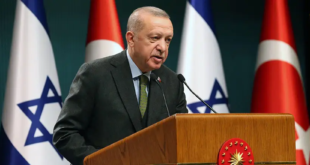Thomas Friedman’s articles are usually logical and correct, but his “Many plans, no news” (Views, March 31) is neither. He states that Secretary of State Condoleezza Rice has no coherent Middle East strategy. Although six years late, the secretary’s current peace effort is a coherent strategy based on the unanimous 2002 Arab summit proposal, which was recently reconfirmed. It promises full peace for Israel with all Arab nations if Israel withdraws to its 1967 borders and a fair solution is found for Palestinian refugees. It has been extolled by members of the international quartet and by Prime Minister Ehud Olmert of Israel. Although everyone knows that this offer must be modified through talks, it is a major step in the right direction.
Friedman ridicules the “cynical Hamas-Fatah cease-fire accord,” but there was no possibility of progress without the formation of a Palestinian unity government.
The article states that the “Clinton plan” for peace was “the first time the United States laid out its own detailed design of a fair deal between the parties.” In fact, the Camp David Accord was accepted by Prime Minister Menachem Begin and President Anwar Sadat in 1978, providing Palestinians full autonomy and withdrawal of Israel’s military and political forces from Palestine, as the first steps toward a comprehensive peace agreement. It was approved by 85 percent of the Israeli Knesset.
Friedman goes on to say that “everyone knew then and knows now that the Clinton plan is the only realistic framework for peace.” Only a very few people would agree with that statement. Neither party accepted this plan without voluminous caveats. No detailed map was proposed, and interpretations of the boundary proposals varied widely.
The much more relevant Geneva Initiative, revealed in Nov. 2003, evolved after two and a half years of negotiations, was endorsed by President Clinton, President Jacques Chirac, Prime Minister Tony Blair, more than 50 other world leaders, and approved by a majority of Israelis and Palestinians. This remains a concrete proposal delineating the precise geographical boundary between Israel and Palestine. It calls for land swaps that permit half the settlers to remain in Palestine and covers the sensitive issues of East Jerusalem and the “right of return” of Palestinians.
Friedman is correct in stating that a lack of substantive moves toward Middle East peace during the past six years have caused violence to escalate. This bloodshed is a continuing tragedy that must be addressed by the international community, and hopefully led by the United States.
 Eurasia Press & News
Eurasia Press & News



